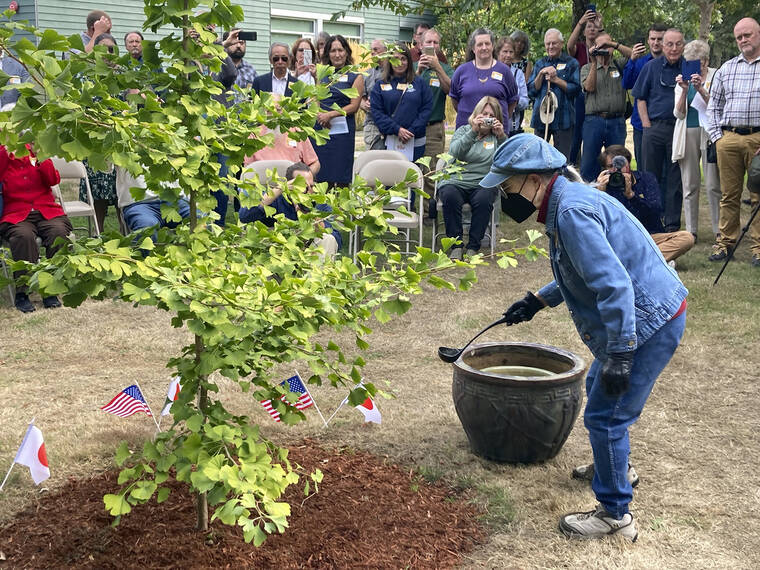Hiroshima bombing recalled in Oregon “peace trees” campaign
SALEM, Ore. — Hideko Tamura Snider was a 10-year-old girl in Hiroshima, Japan, when the United States detonated an atomic bomb over the city on Aug. 6, 1945, during World War II.
On Wednesday, she described the horrors of that day as the guest of honor in a ceremony marking the culmination of a four-year-long campaign in Oregon to plant saplings grown from the seeds of trees that also survived the atomic bombing of Hiroshima.
ADVERTISING
An Oregon official involved in the campaign told the audience that recognition of the continued threat of nuclear weapons is especially relevant today, with Russian President Vladimir Putin making veiled threats to use them in his war against Ukraine.
“So, four years ago we were thinking that this was us looking back at a past when atomic weapons were something that happened long ago. And today, I think it’s much more relevant to us as we sit in this room today,” said Jim Gersbach, an Oregon Community Trees board member and spokesman for the state forestry department.
In Hiroshima, arborist Chikara Horiguchi started growing saplings from the seeds in 1995. A total of 170 trees in Hiroshima that survived the bomb are reportedly still living.
“I believe the best way for me to speak about peace is through the A-bombed trees. A-bombed trees are the symbol of destruction and recovery,” Horiguchi says in a video for Green Legacy Hiroshima, which has been sending seeds and saplings of survivor trees to dozens of countries around the world, including Chile, Ireland and Ethiopia. Green Legacy Hiroshima volunteers began collecting the seeds in 2011.
Arborist Mike Oxendine, of Ashland, Oregon, obtained the seeds from Green Legacy Hiroshima and germinated them. Oregon Community Trees and the forestry department collaborated in finding homes for the trees. Communities all over responded — coastal towns like Seaside, the mountain town of Bend in central Oregon, Hood River along the Columbia River and La Grande in the east.
A total of 51 trees were planted around this Pacific Northwest state, the densest concentration of Hiroshima peace trees anywhere outside Japan, Gersbach said. Most are ginkgo trees along with a few persimmons — both known for their hardiness.
Speaking at the ceremony in the Oregon Department of Forestry headquarters, Tamura Snider said the effort and those behind it symbolize “ways to come together in peace, looking with great hope for the future of this world, rather than perishing in the God-awful nuclear explosion.”


